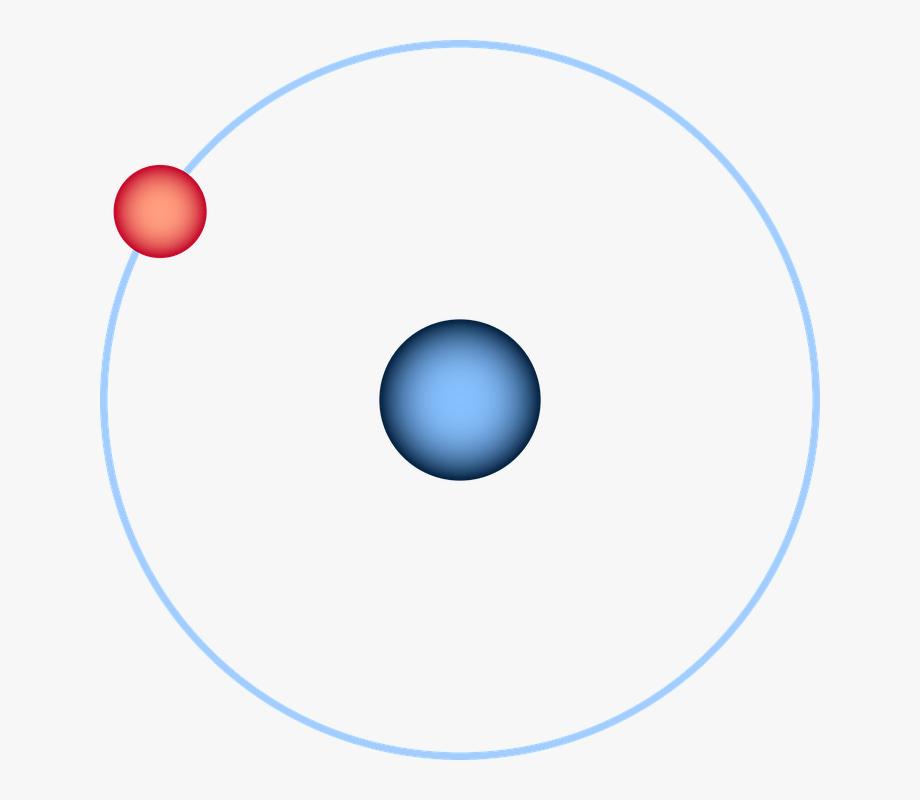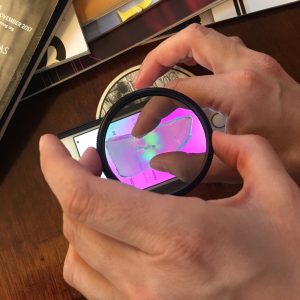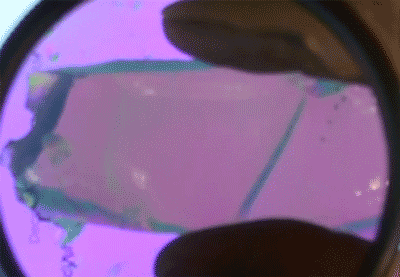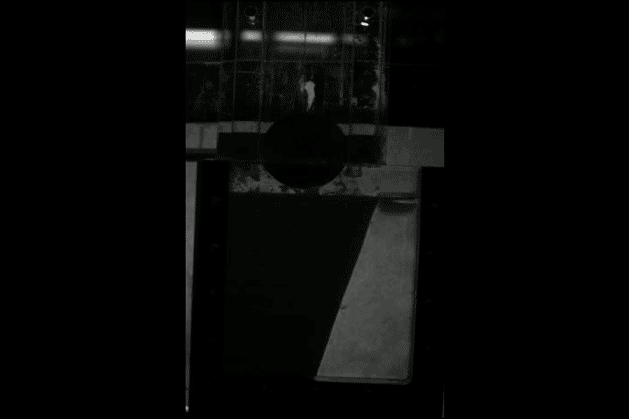
It was a Frankenstein moment for Duke alumnus and adjunct physics professor Henry Everitt.
After years of working out the basic principles behind his new laser, last Halloween he was finally ready to put it to the test. He turned some knobs and toggled some switches, and presto, the first bright beam came shooting out.
“It was like, ‘It’s alive!’” Everitt said.
This was no laser for presenting Powerpoint slides or entertaining cats. Everitt and colleagues have invented a new type of laser that emits beams of light in the ‘terahertz gap,’ the no-man’s-land of the electromagnetic spectrum between microwaves and infrared light.
Terahertz radiation, or ‘T-rays,’ can see through clothing and packaging, but without the health hazards of harmful radiation, so they could be used in security scanners to spot concealed weapons without subjecting people to the dangers of X-rays.
It’s also possible to identify substances by the characteristic frequencies they absorb when T-rays hit them, which makes terahertz waves ideal for detecting toxins in the air or gases between the stars. And because such frequencies are higher than those of radio waves and microwaves, they can carry more bandwidth, so terahertz signals could transmit data many times faster than today’s cellular or Wi-Fi networks.
“Imagine a wireless hotspot where you could download a movie to your phone in a fraction of a second,” Everitt said.
Yet despite the potential payoffs, T-rays aren’t widely used because there isn’t a portable, cheap or easy way to make them.
Now Everitt and colleagues at Harvard University and MIT have invented a small, tunable T-ray laser that might help scientists tap into the terahertz band’s potential.
While most terahertz molecular lasers take up an area the size of a ping pong table, the new device could fit in a shoebox. And while previous sources emit light at just one or a few select frequencies, their laser could be tuned to emit over the entire terahertz spectrum, from 0.1 to 10 THz.
The laser’s tunability gives it another practical advantage, researchers say: the ability to adjust how far the T-ray beam travels. Terahertz signals don’t go very far because water vapor in the air absorbs them. But because some terahertz frequencies are more strongly absorbed by the atmosphere than others, the tuning capability of the new laser makes it possible to control how far the waves travel simply by changing the frequency. This might be ideal for applications like keeping car radar sensors from interfering with each other, or restricting wireless signals to short distances so potential eavesdroppers can’t intercept them and listen in.
Everitt and a team co-led by Federico Capasso of Harvard and Steven Johnson of MIT describe their approach this week in the journal Science. The device works by harnessing discrete shifts in the energy levels of spinning gas molecules when they’re hit by another laser emitting infrared light.
Their T-ray laser consists of a pencil-sized copper tube filled with gas, and a 1-millimeter pinhole at one end. A zap from the infrared laser excites the gas molecules within, and when the molecules in this higher energy state outnumber the ones in a lower one, they emit T-rays.
The team dubbed their gizmo the “laughing gas laser” because it uses nitrous oxide, though almost any gas could work, they say.

Everitt started working on terahertz laser designs 35 years ago as a Duke undergraduate in the mid-1980s, when a physics professor named Frank De Lucia offered him a summer job.
De Lucia was interested in improving special lasers called “OPFIR lasers,” which were the most powerful sources of T-rays at the time. They were too bulky for widespread use, and they relied on an equally unwieldy infrared laser called a CO2 laser to excite the gas inside.
Everitt was tasked with trying to generate T-rays with smaller gas laser designs. A summer gig soon grew into an undergraduate honors thesis, and eventually a Ph.D. from Duke, during which he and De Lucia managed to shrink the footprint of their OPFIR lasers from the size of an axe handle to the size of a toothpick.
But the CO2 lasers they were partnered with were still quite cumbersome and dangerous, and each time researchers wanted to produce a different frequency they needed to use a different gas. When more compact and tunable sources of T-rays came to be, OPFIR lasers were largely abandoned.
Everitt would shelf the idea for another decade before a better alternative to the CO2 laser came along, a compact infrared laser invented by Harvard’s Capasso that could be tuned to any frequency over a swath of the infrared spectrum.
By replacing the CO2 laser with Capasso’s laser, Everitt realized they wouldn’t need to change the laser gas anymore to change the frequency. He thought the OPFIR laser approach could make a comeback. So he partnered with Johnson’s team at MIT to work out the theory, then with Capasso’s group to give it a shot.
The team has moved to patent their design, but there is still a long way before it finds its way onto store shelves or into consumers’ hands. Nonetheless, the researchers — who couldn’t resist a laser joke — say the outlook for the technique is “very bright.”
This research was supported by the U.S. Army Research Office (W911NF-19-2-0168, W911NF-13-D-0001) and by the National Science Foundation (ECCS-1614631) and its Materials Research Science and Engineering Center Program (DMR-1419807).
CITATION: “Widely Tunable Compact Terahertz Gas Lasers,” Paul Chevalier, Arman Armizhan, Fan Wang, Marco Piccardo, Steven G. Johnson, Federico Capasso, Henry Everitt. Science, Nov. 15, 2019. DOI: 10.1126/science.aay8683.























 Post by Stella Wang
Post by Stella Wang




